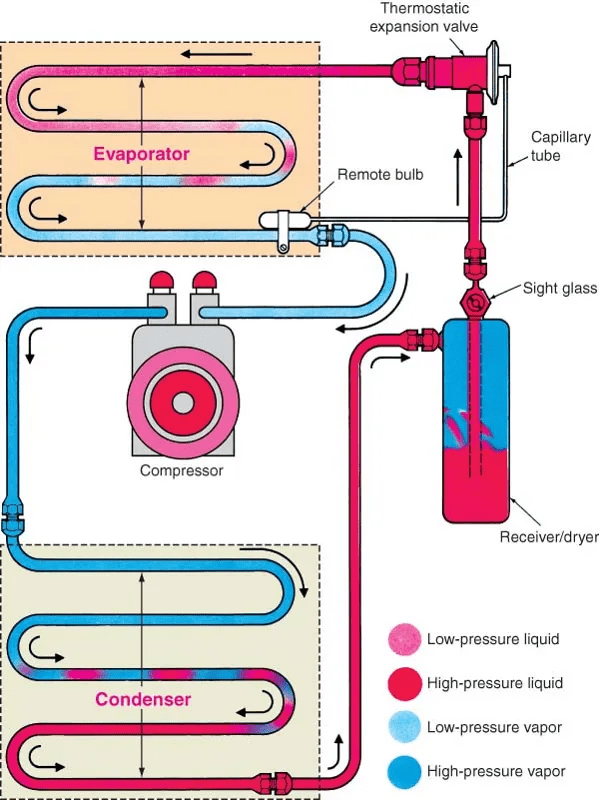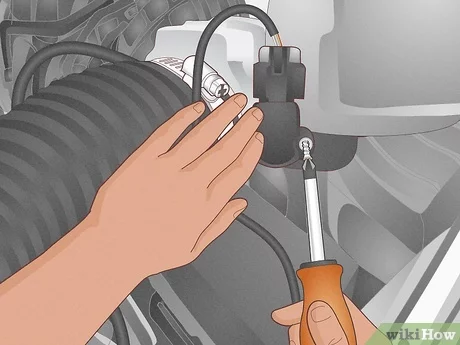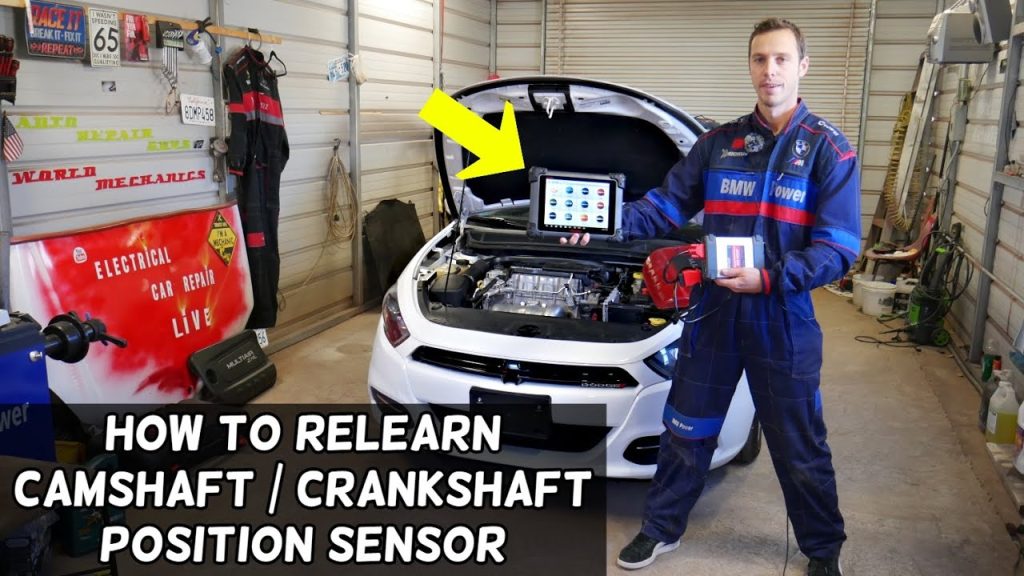A car air conditioning system diagram illustrates the components and flow of refrigerant. Key parts include the compressor, condenser, expansion valve, and evaporator.
A car air conditioning system is essential for maintaining a comfortable driving environment. Understanding its components helps in diagnosing issues and performing maintenance. The system primarily consists of a compressor, condenser, expansion valve, and evaporator. The compressor pressurizes the refrigerant, which then cools in the condenser.
The cooled refrigerant flows through the expansion valve, reducing its pressure. Finally, the evaporator absorbs heat from the car’s interior, providing cool air. Regular maintenance ensures optimal performance and longevity. Familiarizing yourself with the diagram can make troubleshooting easier, saving time and money.
Introduction To Car Air Conditioning
The car air conditioning system keeps the interior cool. It helps you stay comfortable on hot days. Understanding its workings can help you maintain it better.
Essential Functions Of Car Ac
The car AC system has essential functions that keep it running smoothly. Here are the key roles it plays:
- Cooling the Air: It reduces the temperature inside the car.
- Dehumidifying: It removes moisture from the air, keeping it dry.
- Filtering: It cleans the air by removing dust and pollen.
- Ventilation: It circulates fresh air throughout the car.
Historical Evolution Of Automotive Cooling
The historical evolution of car cooling systems is fascinating. Here’s a brief overview:
| Year | Development |
|---|---|
| 1940 | First car with factory-installed AC: Packard. |
| 1953 | Chrysler introduces modern AC systems. |
| 1969 | Automatic climate control systems appear. |
| 2000s | Eco-friendly refrigerants become standard. |
Understanding this evolution helps appreciate how far technology has come.
Core Components Of Ac Systems
The car air conditioning system is a complex mechanism. It ensures cool air inside your vehicle. Each part has a unique role in the cooling process. Understanding these core components helps in maintaining the system better.
Compressor Role And Types
The compressor is the heart of the AC system. It circulates refrigerant throughout the system. This component pressurizes the refrigerant, turning it from gas to liquid. This process is essential for cooling.
There are several types of compressors:
- Reciprocating Compressors: These are common in many cars. They use pistons to compress the refrigerant.
- Rotary Compressors: These are quieter and more efficient. They use rotating elements to compress the refrigerant.
- Scroll Compressors: These have fewer moving parts. They are known for their reliability and efficiency.
Each type has its own benefits. Choosing the right one depends on your car’s needs.
Condenser’s Heat Dispersion
The condenser is another vital component. It is located in front of the radiator. It helps dissipate the heat absorbed by the refrigerant. This is crucial for maintaining the cooling cycle.
The condenser works by turning high-pressure gas into liquid. This process releases heat outside the vehicle. Effective heat dispersion ensures the AC system works efficiently.
Here’s a quick look at its function:
| Step | Description |
|---|---|
| 1 | Receives high-pressure gas from the compressor |
| 2 | Gas turns to liquid, releasing heat |
| 3 | Liquid refrigerant moves to the next stage |
Maintaining the condenser ensures a longer lifespan for your AC system.
Deep Dive Into Refrigerant Flow
The car air conditioning system is complex. Understanding the refrigerant flow can help diagnose issues. This section will explore how refrigerant moves through the system.
Cycle Of Refrigeration
The refrigeration cycle is continuous. It starts at the compressor. The compressor pumps refrigerant in a high-pressure state.
Next, the refrigerant flows to the condenser. Here, it releases heat and turns into a liquid. This liquid then moves to the expansion valve.
At the expansion valve, the pressure drops. The refrigerant cools and becomes a low-pressure gas. Finally, it enters the evaporator. Here, it absorbs heat from the cabin air. This completes the cycle.
Importance Of Pressure Changes
Pressure changes are vital in the system. They control the refrigerant state. High pressure keeps the refrigerant hot and liquid. Low pressure cools and turns it into gas.
In the compressor, pressure increases. This raises the refrigerant temperature. In the expansion valve, pressure drops. This cools the refrigerant down.
The pressure changes must be accurate. Any deviation can cause system failure. Monitoring these changes ensures the system works efficiently.
| Component | Function |
|---|---|
| Compressor | Pumps refrigerant, increases pressure |
| Condenser | Releases heat, converts gas to liquid |
| Expansion Valve | Lowers pressure, cools refrigerant |
| Evaporator | Absorbs heat, converts liquid to gas |
Understanding the refrigerant flow helps maintain the system. It ensures your car’s AC works effectively.

Credit: www.researchgate.net
The Expansion Valve Or Orifice Tube
The expansion valve or orifice tube is a vital part of your car’s air conditioning system. It regulates the refrigerant flow into the evaporator. This ensures your car’s cabin stays cool and comfortable.
Regulating Refrigerant Flow
The expansion valve or orifice tube controls the amount of refrigerant entering the evaporator. This is crucial for maintaining the correct pressure and temperature. These components help in converting the high-pressure liquid refrigerant into a low-pressure gas. This process is essential for the cooling effect in your car’s air conditioning system.
Differences Between Valve Types
| Expansion Valve | Orifice Tube |
|---|---|
| Adjusts refrigerant flow based on temperature. | Has a fixed opening for refrigerant flow. |
| More complex and expensive. | Simpler and cheaper. |
| Better at handling varying cooling loads. | Best for steady cooling demands. |
Both types have their pros and cons. Choosing the right one depends on your car’s cooling needs. The expansion valve offers more precision. The orifice tube is simpler and more affordable.
Role Of The Evaporator
The evaporator is a crucial component in your car’s air conditioning system. It absorbs heat from the car’s cabin, making the air cooler. Without the evaporator, the air conditioning system cannot function effectively.
Heat Absorption Explained
The evaporator works by absorbing heat from the air inside the car. It contains a cold refrigerant that turns hot air into cooler air. This process is called heat exchange. As the warm air passes over the evaporator, the refrigerant absorbs the heat.
The heat is then transferred outside the car, leaving cool air inside. The evaporator’s design allows for maximum heat absorption. This ensures a comfortable temperature in your car.
Maintenance Tips For Efficiency
Maintaining your car’s evaporator is essential for optimal performance. Here are some tips to keep it efficient:
- Clean the evaporator regularly to remove dirt and debris.
- Check for leaks in the refrigerant lines to prevent loss of cooling.
- Inspect the blower motor to ensure proper airflow over the evaporator.
- Replace the cabin air filter frequently to avoid clogging the evaporator.
Regular maintenance can extend the life of your evaporator. It also helps in keeping your car’s air conditioning system running smoothly.
| Maintenance Task | Frequency |
|---|---|
| Clean evaporator | Every 6 months |
| Check for leaks | Annually |
| Inspect blower motor | Every 3 months |
| Replace cabin air filter | Every 6 months |

Credit: m.youtube.com
Ac System Diagram Analysis
Understanding the car air conditioning system diagram can help diagnose issues. This section breaks down the diagram and explains each part.
Interpreting Diagram Symbols
Diagrams use symbols to represent different components. Knowing these symbols is crucial.
- Compressor: Often shown as a circle or oval with lines.
- Condenser: Usually a zigzag line indicating heat exchange.
- Evaporator: Represented by another set of zigzag lines.
- Expansion Valve: Typically a small circle or triangle.
These symbols help in identifying the parts and their connections.
Step-by-step Diagram Walkthrough
Follow this step-by-step guide to understand the AC system:
- Compressor: The refrigerant starts here. It compresses the gas.
- Condenser: The gas moves to the condenser. It cools and turns into liquid.
- Receiver-Drier: This part removes moisture. It ensures the system is dry.
- Expansion Valve: The liquid refrigerant passes through this valve. It turns into a low-pressure gas.
- Evaporator: The gas absorbs heat here. It cools the air.
- Blower Fan: The fan blows cool air into the car.
Each step is vital for the AC system to function properly.
Understanding this diagram helps in identifying issues. This knowledge can save time and money.
Troubleshooting Common Ac Issues
Car air conditioning systems can fail due to many reasons. Knowing how to troubleshoot these issues can save you time and money. This section covers common symptoms, DIY fixes, and when to seek professional help.
Identifying Symptoms Of Failure
Recognizing symptoms early can prevent bigger problems. Here are some common signs:
- Weak Airflow: Air is not blowing strongly from the vents.
- Warm Air: Air from the vents is not cold.
- Unusual Noises: Clicking or grinding sounds when the AC is on.
- Bad Odors: Musty or moldy smells from the vents.
Diy Fixes Vs. Professional Repair
Some AC problems are easy to fix at home. Others need expert help. Here’s a quick guide:
| Issue | DIY Fix | Professional Repair |
|---|---|---|
| Weak Airflow | Check and replace the cabin air filter. | Inspect and clean the blower motor. |
| Warm Air | Check refrigerant levels and recharge if low. | Inspect for leaks and fix them. |
| Unusual Noises | Remove debris from the fan. | Replace the compressor if needed. |
| Bad Odors | Replace the cabin air filter. | Clean and disinfect the AC system. |

Credit: www.uti.edu
Enhancing Ac System Performance
Maintaining your car’s air conditioning system ensures a comfortable ride. A well-functioning AC system keeps you cool during hot days. Learn how to enhance your AC system’s performance.
Routine Maintenance Checklist
Regular maintenance keeps your car’s AC system in top shape. Follow this checklist to ensure optimal performance:
- Check refrigerant levels: Low levels reduce cooling efficiency.
- Inspect compressor: Ensure it is running smoothly without noise.
- Clean condenser coils: Dirt buildup can block airflow.
- Replace cabin air filter: A clogged filter reduces air quality.
- Check for leaks: Leaks can lead to refrigerant loss.
Upgrades For Improved Cooling
Consider upgrades to enhance your car’s AC performance. These modifications can improve cooling efficiency significantly:
- High-efficiency condensers: These improve heat exchange rates.
- Advanced compressors: Modern compressors provide better cooling power.
- Enhanced refrigerants: Use eco-friendly refrigerants for better cooling and environmental safety.
- Thermal expansion valves: These adjust refrigerant flow for optimal cooling.
A combination of routine maintenance and strategic upgrades will keep your car’s AC system running efficiently. Stay cool and comfortable on every drive!
Frequently Asked Questions
What Are The Parts Of A Car Air Conditioning System?
A car air conditioning system includes a compressor, condenser, evaporator, expansion valve, and refrigerant. These components work together to cool your vehicle.
How Does The Ac System Work In A Car?
The car’s AC system cools air using a refrigerant. The compressor pressurizes the refrigerant, which then cools the air in the evaporator. The blower fan distributes the cooled air into the cabin.
What Are The 4 Major Components Of The Air Conditioning System?
The four major components of an air conditioning system are the compressor, condenser, expansion valve, and evaporator. These parts work together to cool and dehumidify indoor air.
What Controls Ac Air Flow In Car?
The AC air flow in a car is controlled by the blower motor, vents, and the air mix door. Adjusting the settings on the dashboard regulates temperature, fan speed, and direction of air flow.
What Is A Car Air Conditioning System?
A car air conditioning system cools and dehumidifies the air inside the vehicle.
How Does Car Ac System Work?
It circulates refrigerant through components to absorb and release heat.
What Are The Main Components Of Car Ac?
Compressor, condenser, evaporator, expansion valve, and refrigerant.
Why Is My Car Ac Not Cooling?
Possible reasons include low refrigerant, faulty compressor, or clogged condenser.
Conclusion
Understanding the car air conditioning system diagram enhances your vehicle maintenance skills. Regular checks ensure optimal performance and comfort. Keep your AC system in top shape to enjoy a cool ride. Don’t overlook this crucial part of your car. Proper maintenance can save you from costly repairs.
Stay cool and informed!



